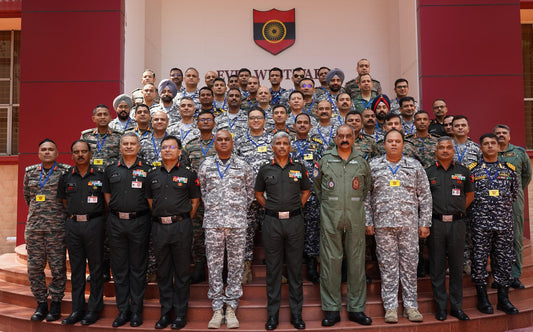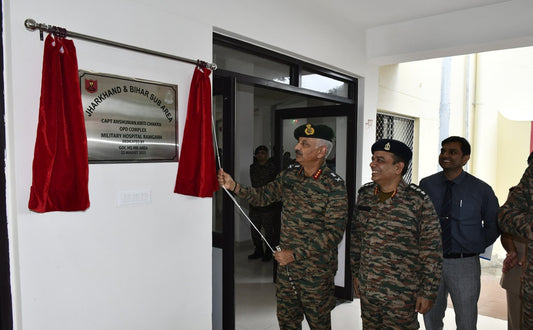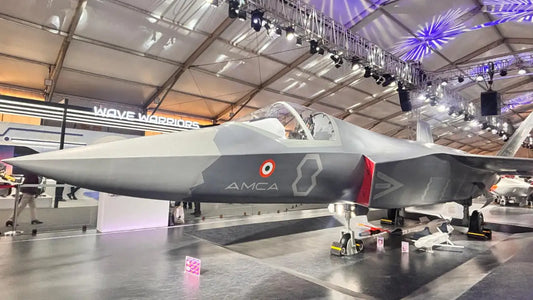Indian Army Salary 2025 : Structure, Perks, and Benefits

In 2025, the Indian Army continues to shape the armed forces landscape through a well-defined salary structure, offering competitive pay, allowances, and myriad benefits to its personnel. This compensation framework not only underscores the commitment to national service but also reflects the need to attract talent in a landscape marked by evolving security challenges and technological advancements. Understanding the intricacies of the Indian Army salary, particularly after the implementation of the 7th Pay Commission and the introduction of the Agniveer scheme, sheds light on how the nation values and nurtures its defenders.
Historical Context
The modern Indian Army's salary structure has been shaped through years of policy adjustments, beginning from the early days post-independence. The implementation of the Pay Commissions has been pivotal in updating the remuneration system, thus ensuring that salaries keep pace with inflation and the rising cost of living. The 7th Pay Commission, established in 2015, brought significant changes that enhanced the basic pay and provided various allowances, setting the stage for continued improvements into 2025.
In the backdrop of these developments, the Indian government introduced the Agniveer scheme in 2022, offering a four-year service period filled with unique financial and career opportunities for young recruits. This shift allowed for rapid inclusion of youth into the armed forces while also focusing on long-term benefits post-service.
Salary Structure for Agniveers in 2025
The Agniveer programme has been designed with a modernized structure that caters to a younger demographic. Here's an in-depth look at what Agniveers can expect in terms of salaries:
- Agniveers serve a four-year tenure where the financial package is tailored to generate solid engagement without traditional allowances like the ones linked to longer-term positions.
- The monthly salary progression is as follows:
-
1st Year:
- Total: ₹30,000
- In-hand: ₹21,000 (after 30% contribution to the Agniveers Corpus Fund of ₹9,000, with equal government matching)
-
2nd Year:
- Total: ₹33,000
- In-hand: ₹23,100 (₹9,900 contribution)
-
3rd Year:
- Total: ₹36,500
- In-hand: ₹25,550 (₹10,950 contribution)
-
4th Year:
- Total: ₹40,000
- In-hand: ₹28,000 (₹12,000 contribution)
At the culmination of their service, approximately 75% of Agniveers are expected to receive the Seva Nidhi terminal benefit, which is estimated to be around ₹10.04 lakh, excluding interest. This amount includes their contributions to the Corpus Fund and is subsidized by the government.
Indian Army Salary for JCOs and Other Ranks (2025)
| Rank | Pay Level (7th CPC) | Basic Pay Range (₹) | Military Service Pay (₹) | Key Allowances* |
|---|---|---|---|---|
| Sepoy | Level 3 | 21,700 – 69,100 | 5,200 | DA, Field Area Allowance, HRA, Transport Allowance, Kit Maintenance, High Altitude Allowance (if applicable) |
| Lance Naik | Level 3 | 21,700 – 69,100 | 5,200 | Same as above |
| Naik | Level 4 | 25,500 – 81,100 | 5,200 | Same as above |
| Havildar | Level 5 | 29,200 – 92,300 | 5,200 | Same as above |
| Naib Subedar | Level 6 | 35,400 – 1,12,400 | 5,200 | Same as above + higher FA/HA if posted in operational zones |
| Subedar | Level 7 | 44,900 – 1,42,400 | 5,200 | Same as above |
| Subedar Major | Level 8 | 47,600 – 1,51,100 | 5,200 | Same as above |
Common Allowances for JCOs and ORs
These are in addition to Basic Pay and MSP:
- Dearness Allowance (DA): Currently ~50% of Basic Pay (revised twice a year).
- High Altitude Allowance: ₹3,400 – ₹25,000 per month (depending on altitude & posting).
- Field Area Allowance: ₹6,000 – ₹16,900 per month (depending on location).
- Counter Insurgency Allowance: ₹10,500 – ₹16,900 per month.
- Uniform Allowance: ₹20,000 annually.
- Transport Allowance: ₹3,600 – ₹7,200 + DA.
- Para/Para SF Allowance: ₹10,500 – ₹25,000 per month.
- Special Forces Allowance: Higher for elite units like PARA SF, NSG.
- Flying/Technical Allowance: For specific trades/appointments.
Salary Structure for Regular Indian Army Officers in 2025
Regular Indian Army personnel have an entirely different salary structure that reflects their rank and years of service. Here’s an outline of the basic pay for officers serving in various ranks:
- Lieutenant: ₹56,100 – ₹1,77,500 per month
- Captain: ₹61,300 – ₹1,93,900
- Major: ₹69,400 – ₹2,07,200
- Lieutenant Colonel: ₹1,21,200 – ₹2,12,400
- Colonel: ₹1,30,600 – ₹2,15,900
- Brigadier: ₹1,39,600 – ₹2,17,600
- Major General: ₹1,44,200 – ₹2,18,200
- Lieutenant General: ₹1,82,200 – ₹2,24,100
- General (Chief of Army Staff): ₹2,50,000 fixed
This tiered pay structure not only incentivizes service members to pursue higher ranks but also underscores the responsibility and strategic importance associated with each level.
Allowances and Perks
In addition to the base salary, Indian Army personnel benefit from a range of allowances designed to enhance their overall remuneration. These allowances serve to compensate for the unique challenges associated with military life:
- Dearness Allowance (DA): Adjusted based on inflation to preserve purchasing power.
- Military Service Pay (MSP): ₹15,500 monthly for officers up to the rank of Brigadier.
- House Rent Allowance (HRA): Varies based on deployment location (urban, rural, and metropolitan contexts).
- Transport Allowance: ₹3,600 to ₹7,200 depending on the stationed location.
- Field Area Allowance: Ranges from ₹10,500 to ₹25,000 based on the level of deployment hardship.
- High Altitude Allowance: ₹1,600 to ₹16,900 depending on the elevation.
- Special Forces Allowance: ₹25,000 for those in specialized units.
- Uniform Allowance: ₹20,000 each year to help maintain official attire.
- Leave Provisions: Includes 20 days of casual leave annually and up to 2 years of study leave with full pay.
- Encashment of Leave: Enables encashment of up to 300 days of unused leave at the last drawn pay.
- Kit Maintenance Allowance: Additional benefits for maintaining military gear and uniforms.
Tax Benefits for Defence Personnel
The salary structure also incorporates various tax benefits that ease the financial burden on Defence personnel. Notable tax exemptions include:
- Field Area Allowance: Tax-exempt up to ₹2,600/month.
- Counter Insurgency Allowance: Tax-exempt up to ₹3,900/month.
- High Altitude Allowance: Defined tax exemption based on location.
- Uniform Allowance: Fully exempt when spent on official usage.
- Transport allowance: Partially exempt for disabled personnel, up to ₹3,200/month.
These exemptions are designed to alleviate some of the financial stresses that soldiers encounter, making their remuneration packages more attractive.
The comprehensive benefits package and salary structure play a crucial role in the long-term commitment of soldiers within the Indian Army. For example, the Agniveer scheme’s structured salary plan allows young recruits to hone their skills for four years with the added incentive of a sizable terminal benefit. In one case, a soldier who served as an Agniveer utilized the savings from the Seva Nidhi to enhance his education after service, successfully transitioning to a civil career.
The benefits extended to regular army personnel, on the other hand, create a stronger sense of loyalty. Officers often recount stories of how the various allowances have provided substantial support during their tenure, especially in hardship postings where the cost of living can be significantly higher.
Challenges Facing the Indian Army Salary Structure
While the current salary framework is robust, it faces several challenges:
- Inflation Impact: As inflation rises, the effectiveness of salary adjustments and allowances suffers, potentially eroding the purchasing power of military personnel.
- Retention Issues: The Agniveer scheme has been met with skepticism regarding long-term career commitment, necessitating further engagement and benefits to ensure recruits remain in service.
- Awareness and Transparency: Many personnel are still unaware of the full extent of their financial benefits, which can lead to dissatisfaction. Addressing this through effective communication and education is crucial.
Future Trends and Predictions
Looking ahead to 2025 and beyond, several trends may shape the salary structure and benefits package of the Indian Army:
- Increased Digitalization: The rise of technology will likely streamline salary processes, improve transparency, and enhance accessibility to financial services for personnel.
- Enhanced Professional Development: Recruitment packages may increasingly include further educational benefits, enabling soldiers to gain skills that are transferable to civilian life post-service.
- Revisiting Agniveer Structure: Based on feedback and engagement levels, adjustments might be made to the Agniveer scheme to enhance retention, potentially incorporating longer service options or benefits.
Conclusion
The salary structure and benefits offered by the Indian Army, encapsulated in the nuances of both Agniveer and regular officer packages, reflect a dedication to supporting personnel through competitive remuneration, allowances, and structuring benefits. As the Indian Army evolves to meet contemporary challenges, ensuring that salaries remain attractive and comprehensive becomes paramount. This strategy not only aids in retention but also contributes to a skilled and motivated force ready to protect national interests.
For those considering a future in the armed forces, or for parents guiding their children, understanding the Indian Army's salary package is the first step in appreciating the value of service and the support available for personnel. Engaging in this dynamic environment brings a sense of pride and purpose, aligning personal growth with the nation's mission.




















5 comments
Nice
Hi sir, this is ramesh from Hyderabad, I am impressed reading your article I am english language Lerner it is very much useful for me.
I request kindly send me articles from which I can learn better.
Thank you.
I have army offers
Army
The salary of Sub Major is disgusting. To become Sub Major one has to have knowledge, ability & Command. The Salary is hardly above of a Subedar. Why Sub Major cannot draw salary more than a Lieutenant? 100% Sub Majors should be given Honorary rank unless there is adverse remarks.